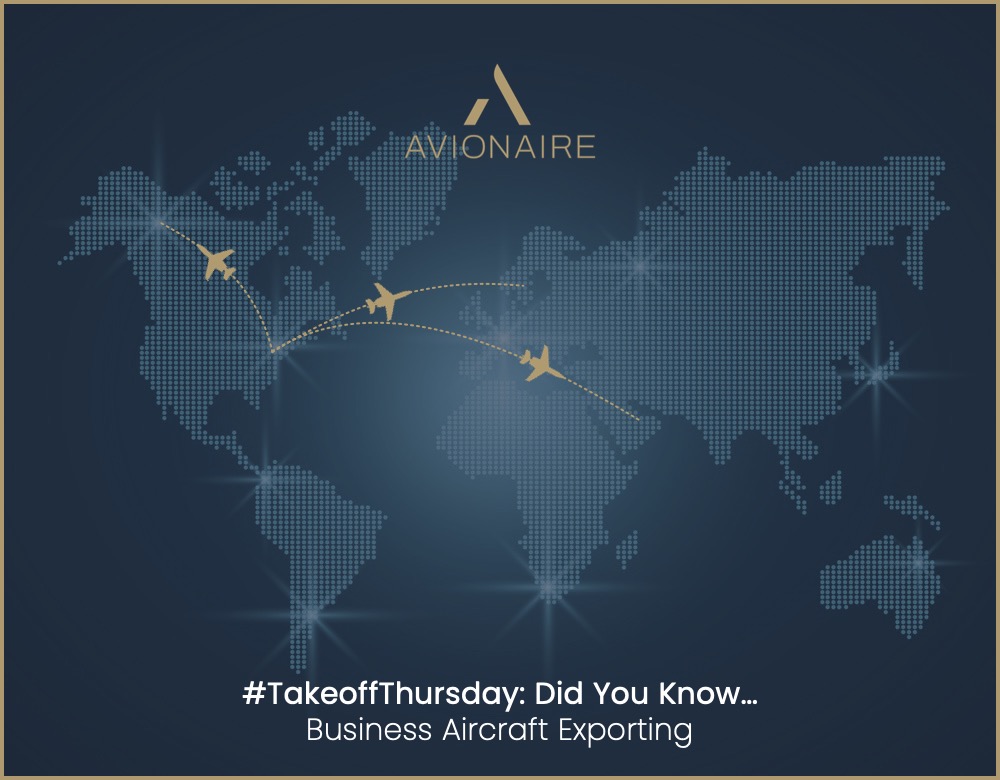Industry Insights | February 1, 2024
Clear for #TakeoffThursday!! Let’s dive into an overview regarding export requirements & regulations in the U.S. for business aircraft.

Did you know…
Exporting business #aircraft from the U.S. involves complex legal and regulatory compliance. Though the sale process may seem straightforward, it requires careful navigation of various requirements. At AVIONAIRE, we ensure this process is as seamless as your transaction, handling every detail with precision and expertise. Here are some key export requirements to consider:
📕 Export Controls and Licensing: Private jet sales are subject to U.S. export controls administered by the Bureau of Industry and Security (BIS) under the Department of Commerce. Depending on the destination country, end-use, and specific aircraft technology, exporters may need to obtain licenses or authorizations before exporting.
📗 Documentation and Paperwork: Exporting aircraft requires extensive documentation, including sales contracts, export licenses (if applicable), bills of sale, airworthiness certificates, and customs declarations.
📘 Record Keeping and Reporting: Maintaining thorough records of all export transactions, including correspondence, documentation, and due diligence efforts, is essential for demonstrating compliance with export regulations.
Finally, keep in mind that when a U.S.-based aircraft is sold to a foreign buyer and moved abroad for over a year, an Electronic Export Information (EEI) filing is necessary. This is done through the US Customs’ Automated Export System (AES), usually by a hired US Customs broker, before the aircraft leaves the U.S. However, no export filing is needed for temporary trips, like standard passenger or cargo flights, or if the aircraft returns to its U.S. base within a year.
Until next week… blue skies and tailwinds! 🛩️

